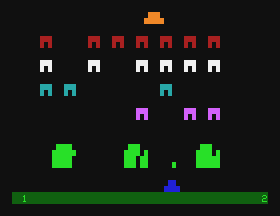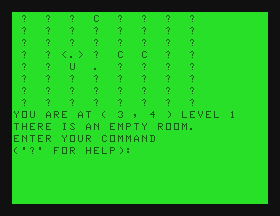The Tandy TRS-80 MC-10 was Tandy’s attempt to compete with the Commodore VIC-20. Released in 1983 and based on the TRS-80 CoCo 1, this machine retailed for a paltry $119.99, which did not give you much at all. It used a Motorola 6803 CPU clocked at 890KHz (that’s under a megahertz!) with 4K RAM and 8K ROM featuring BASIC. It could do color video with the same MC6847 found in the proper CoCo system, and be upgraded to 20K RAM with an addon.
However, it was a complete and total mess. In 1983, a new microcomputer was expected to have things like:
- Full travel keyboards
- Disk drive support
- Medium resolution graphics
- 64K of memory
This system has a chiclet keyboard, only used cassette tapes, low resolution graphics, and barely any memory. It also has really bad RS-232 serial functionality. The 6803 CPU has a built-in UART, so it SHOULD be able to do it without needing any special hardware or hacks. But the engineers only provided one timing crystal – a 3.58 MHz TV colorburst crystal to properly generate video – which did not divide correctly for serial communication timing. Instead, all serial communications are done manually in software, which results in a very unstable and difficult-to-use connection. The MC-10 was canned in 1984, less than a year after it was released. Now, what to do with all that unused stock…
http://darth-azrael.tumblr.com/post/171535130100/tumblokami-the-tandy-trs-80-mc-10-was-tandys
Tandy produced a confusing array of incompatible computers with the TRS-80 label. First up was the main TRS-80 line that started with the TRS-80 Model I and continued through the Model IV many years later. These were all essentially compatible with each other. Then there was the TRS-80 Color Computer line. This was a completely different line of computers that was incompatible with the first though they were sold at the same time. The Color Computer line eventually dropped the TRS-80 designation and was just known as the Tandy or Radio Shack Color Computer or CoCo for short. The last in that line was the CoCo 3.



For those that have an MC-10 or are interested in seeing what one was like in action, checkout http://faculty.cbu.ca/jgerrie/Home/jgames.htmlwhich has tons of mostly fan-made games (screenshots of a few above). For those with a real MC-10, most of these require the 16K expansion. However, there is also an emulator linked at the top of that page.


